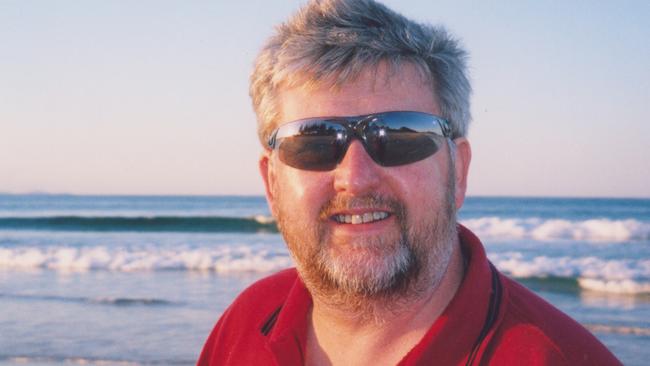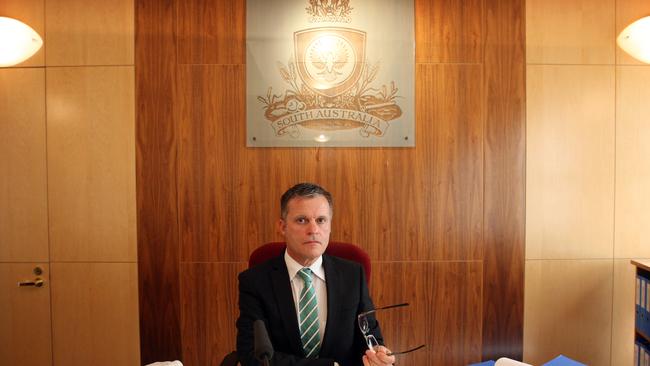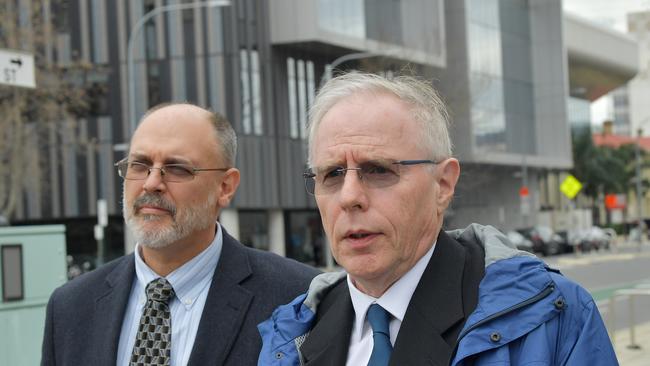RAH stroke inquest: Dr Steve Chryssidis tells Coroner about ‘toxic culture of exclusivity’ in radiology
A DOCTOR says there is a “culture of exclusivity” and he was the “victim of an insidious hate campaign” when he tried to support a 24-hour Royal Adelaide Hospital specialist service in the lead-up to a rostering blunder.
- Claims of an affair, bullying and overtime rorting at RAH
- ‘Bad blood’ between doctors as specialists try to ‘protect their turf’
- Patient had to wait three times as long for emergency treatment
- On-call specialist not registered to perform procedure
- Stroke doctors don’t get on, earn $1.1 million
- Two dead in RAH stroke scandal: How The Advertiser broke the story
A DOCTOR says there is a “culture of exclusivity” and he was the “victim of an insidious hate campaign” when he tried to support a 24-hour Royal Adelaide Hospital specialist service in the lead-up to a rostering blunder.
On Wednesday, Flinders Medical Centre radiologist Dr Steve Chryssidis told State Coroner Mark Johns about the “toxic” environment in the RAH radiology department.
“I felt that I was the victim of an insidious hate campaign,” he said.
“There was an undermining culture of exclusivity and the environment was toxic — it was destructive.
“I struggled in that environment and there was no acknowledgment of the efforts I had made to support the service.”
Dr Chryssidis was called in to the RAH to perform clot retrievals on stroke patients Michael John Russell, 60, and Leslie Robert Graham, 87, whose deaths are now the subject of a coronial inquest.
The men died when the hospital’s only two INR specialists — Dr James Taylor and Dr Rebecca Scroop — were on leave at the same time in April.

The procedures were performed by Dr Chryssidis — SA’s only other registered INR specialist — but were unsuccessful.
Both deaths have shed light on a wide range of staffing issues with radiology across Adelaide.
Dr Chryssidis detailed incidents when Dr Scroop would interfere with procedures he had been authorised to perform and how she would discredit his reputation.
“Any ideas were rebuffed, any opportunities to support (the service) were deflected,” he said.
“I was inappropriately and harshly discredited when there were difficult clinical decisions rather than being supported.
“I found that there was an undercurrent of undermining — Dr Scroop had chosen to pursue a very controlling position.
“(She would) control clinical peers, control doctors within the unit, control rosters, control support members, control device companies.
“I also recall being in a meeting with Dr Taylor some years earlier, I had met with him to discuss the building of a team, and he said, ‘I don’t want to piss Dr Scroop off — I need her’.”
Dr Chryssidis made complaints about the INR service, which sparked a review by SA Medical Imaging (SAMI) in 2013.
That review stated the service needed a third INR specialist.

Following ignored requests by Dr Chryssidis to then-SA Health chief executive David Swan about the review and whether any changes would be made to the service, the doctor resigned from the RAH.
Earlier this year, SAMI advertised to appoint a third INR specialist at the RAH.
Dr Chryssidis said he applied for the position because he was the only other specialist registered with the Conjoint Committee for Recognition of Training in Interventional-Neuro Radiology (CCINR) — a requirement by SAMI.
When asked if Dr Scroop was on the interview panel, Dr Chryssidis replied that she was.
“Were you successful in getting that job?,” his lawyer, Hannah Doyle, asked.
Dr Chryssidis replied: “No, I was not.”
The inquest has previously heard that position was given to another doctor, who could not be registered with the CCINR until she had performed a certain number of supervised procedures.
She is expected to be eligible for registration in the next six weeks.
On Monday, the inquest heard allegations of a staff love affair turned sour, rorting overtime, industrial blackmail and bullying between radiologists at the RAH.
Former RAH radiology head Dr Mary Moss said personal difficulties between the three INR specialists “were apparent from the day I started”.

Dr Chryssidis made a professional misconduct complaint against Dr Scroop — which was substantiated — after she blocked him from doing a brain procedure.
The inquest also heard Dr Taylor had an affair with another radiologist, Dr Suzanne McKeen, which caused further tension in the radiology department.
RAH acting head of radiology, Dr Jim Buckley, has previously told the inquest the rostering blunder was an “error” while Mr Johns has questioned the hospital’s “casual” approach to health administration.
An internal SA Health review found there had been “longstanding, territorial” issues between the three stroke specialists employed by SA Medical Imaging — Dr Taylor, Dr Scroop and Dr Chryssidis.
The inquest has previously heard Dr Scroop and Dr Taylor receive more than $1.1 million a year each to cover the 24-hour INR service at the RAH.
Dr Taylor and Dr Scroop will give evidence later. The inquest continues.
